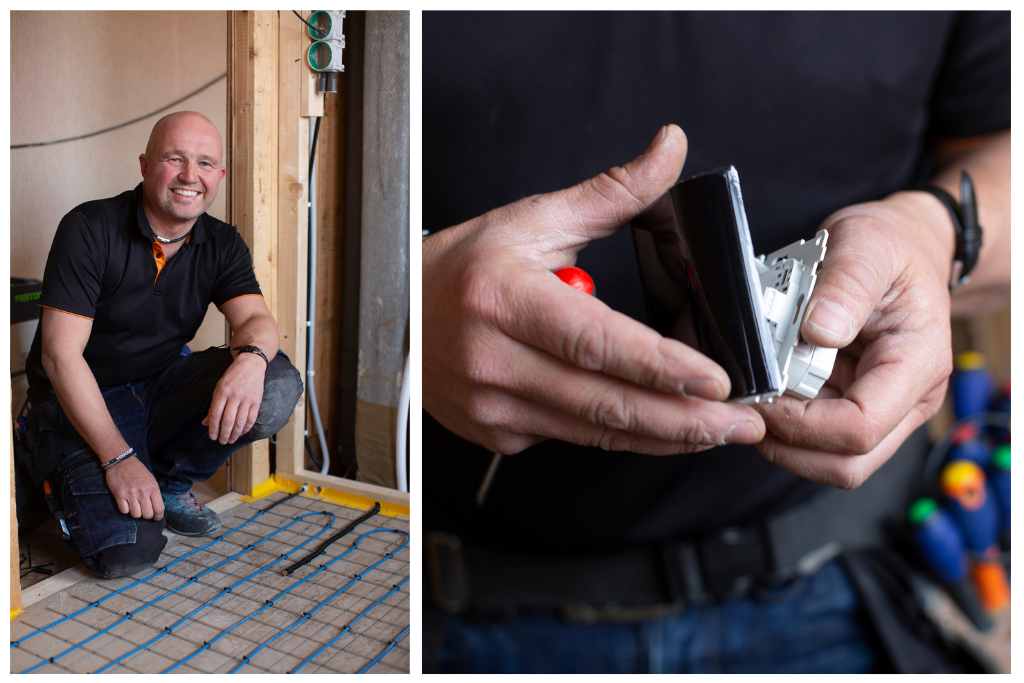Electricity prices are skyrocketing, and as a result, electricity-saving tips abound these days. “Skip your underfloor heating system” is often on the list of tips. How about considering programming thermostats for energy savings?
The advice to turn off underfloor heating to save electricity is not always well thought out. Before doing so, you should consider the consequences of, for example, damp and cold bathroom floors. And above all, you should be aware that a digital, energy-efficient, time-controlled underfloor heating thermostat – instead of an older, analog thermostat – usually results in a significantly lower electricity bill.
How Will Your House React?
“To say that you should completely turn off your electric underfloor heating to save electricity gives a simplified picture of reduced energy consumption”, says William Karlström, Nordic Marketing Manager at nVent Thermal Management.
According to William Karlström, there are some other perspectives that the homeowner should consider first. For example, if the home has underfloor heating as “comfort heating” – i.e. as a complement to other heating – one should consider that the body usually accepts a lower air temperature, as long as the feet are warm. Therefore, the homeowner may want to consider lowering the temperature of – or turning off – another heat source in the home instead. How does the construction and insulation of the house/room cope with switched-off underfloor heating – the house may not do well at all with completely switched-off underfloor heating – is another question to ask.
The Consequence of Wet Floors
“Depending on how well insulated the property is, you can easily choose the exact temperature that suits your home if you have a digital underfloor heating thermostat. New properties are usually very well insulated and there is no reason to let the underfloor heating system heat unnecessarily”, says William Karlström.
In particular, William wants to highlight the impact of switching off underfloor heating in different rooms:
- Damp bathrooms: Underfloor heating effectively dries up water on the bathroom floor, for example, tile floor, and minimizes the feeling of a damp room. Moisture on the floor is also a breeding ground for mold.
- Wet in the hallway: Autumn and winter usually mean traces of rain, snow and slush on the hallway floor, which underfloor heating dries up.
Lower the Temperature and Time Control
“The temperature of electric underfloor heating installed close to the floor surface can usually be lowered while still maintaining a sense of comfort. The underfloor heating system is, even more, energy efficient if it is time-controlled so that it operates only when the floors are in use,” continues William Karlström, urging homeowners to consider replacing their old analog underfloor heating thermostats with programming thermostats for energy savings.
Adapting To the Family’s Schedule
Nowadays, modern digital and programmable thermostats, for example, nVent RAYCHEM SENZ WIFI or nVent NUHEAT Signature have a time control function that allows the underfloor heating temperature and heating periods to be fully adapted to the resident’s needs and lifestyle. This means that significantly less energy is used on underfloor heating when the floors are not in use.
“If the existing electric underfloor heating is controlled by an analog thermostat or a digital thermostat that does not have time control, it is usually worth replacing”, says William Karlström.
“Think Long Term”
Swedish electrical installer Peter Hjalmarsson (Br. Hjalmarsson Elektriska in the city of Kungsbacka) has extensive experience in installing electric underfloor heating. “I understand that people mean well when they suggest ways to save electricity, but sometimes the advice is a bit short-sighted,” says Peter. “I wouldn’t recommend turning off the underfloor heating completely. Think long-term and review the control of the underfloor heating. It will make a huge difference in the energy consumption of an underfloor heating system if it is controlled by a modern, digital, and energy-efficient thermostat with time control,” says Peter Hjalmarsson.



